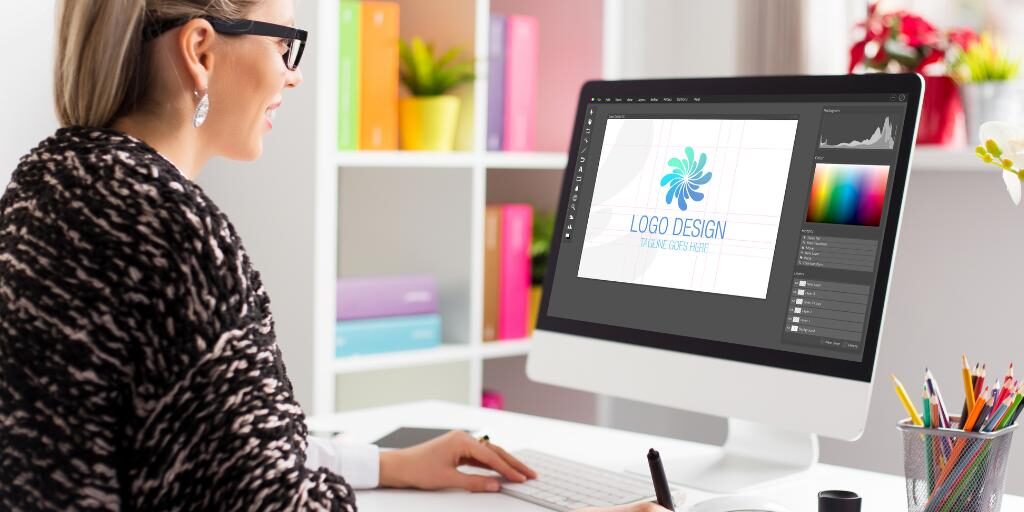Creating a professional logo is a crucial step in establishing your brand’s identity. A well-designed logo can communicate your brand’s values, attract your target audience, and set you apart from the competition. Whether you’re a small business owner, a startup founder, or a freelancer, understanding the basics of logo design can help you create a logo that effectively represents your brand. This guide will walk you through the process of creating a professional logo from scratch, covering everything from understanding your brand to finalizing your design.
Table of Contents
- Understand Your Brand
- Research and Gather Inspiration
- Choose Your Design Style
- Select the Right Colors
- Pick the Perfect Font
- Create Multiple Drafts
- Get Feedback
- Refine Your Design
- Test Your Logo
- Finalize and Save
- Conclusion
Understand Your Brand
Before you start designing, it’s essential to have a clear understanding of your brand.
Ask yourself:
- What are your brand’s core values and mission? Understanding your brand’s purpose and values will guide your design choices.
- Who is your target audience? Knowing your audience helps tailor your logo to their preferences and expectations.
- What message do you want your logo to convey? Your logo should reflect the essence of your brand and its unique selling points.
Research and Gather Inspiration
Look at logos from other brands in your industry to get a sense of what works and what doesn’t. Take note of colors, fonts, and styles that resonate with you.
Some useful resources for inspiration include:
- Logo design websites: Sites like Behance, Dribbble, and Pinterest offer a wealth of creative ideas.
- Competitor analysis: Study your competitors’ logos to understand industry standards and identify opportunities to stand out.
Choose Your Design Style
Decide on the style that best represents your brand.
Some popular styles include:
- Classic: Timeless and traditional designs that convey reliability.
- Modern and Minimalist: Clean lines and simplicity that suggest sophistication and forward-thinking.
- Fun and Quirky: Bright colors and playful elements that appeal to a younger audience.
- Handcrafted: Unique and personal touches that give a sense of authenticity and craftsmanship.
Select the Right Colors
Colors play a significant role in logo design as they evoke emotions and convey messages.
Here are some tips:
- Understand color psychology: Different colors evoke different emotions (e.g., blue for trust, red for excitement).
- Limit your palette: Stick to 2-3 main colors to keep your logo simple and versatile.
- Consider your industry: Certain colors are more prevalent in specific industries (e.g., green for eco-friendly brands).
Pick the Perfect Font
The font you choose should complement your logo and reflect your brand’s personality.
Consider:
- Serif fonts: Traditional and reliable, often used by established brands.
- Sans-serif fonts: Modern and clean, suitable for tech and innovative companies.
- Script fonts: Elegant and sophisticated, ideal for luxury brands.
- Display fonts: Unique and attention-grabbing, perfect for creative industries.
Create Multiple Drafts
Start sketching out your ideas. Don’t be afraid to experiment with different concepts. Create multiple drafts and variations to explore different possibilities. Use tools like Adobe Illustrator or online logo makers to bring your sketches to life.
Get Feedback
Once you have a few solid drafts, seek feedback from others. This could be from colleagues, friends, or even your target audience. Constructive criticism can help you refine your design. Consider using surveys or focus groups to gather diverse opinions.
Refine Your Design
Based on the feedback, make necessary adjustments to your logo. Pay attention to details like alignment, spacing, and balance. Ensure that your logo is versatile and looks good in both color and black-and-white versions.
Test Your Logo
Ensure your logo looks good in different sizes and formats. It should be scalable and versatile enough to work on various mediums, from business cards to billboards. Test your logo on different backgrounds and in different contexts to ensure it maintains its integrity.
Finalize and Save
Once you’re satisfied with your design, finalize it and save it in multiple formats (e.g., PNG, JPEG, SVG). This ensures you have the right file type for any use case. Create a style guide that outlines how your logo should be used to maintain consistency across all platforms.
Conclusion
Creating a professional logo is a blend of creativity and strategy. By understanding your brand, researching, and iterating on your designs, you can create a logo that effectively represents your business and resonates with your audience. A great logo should look good and also tell a story about your brand.









